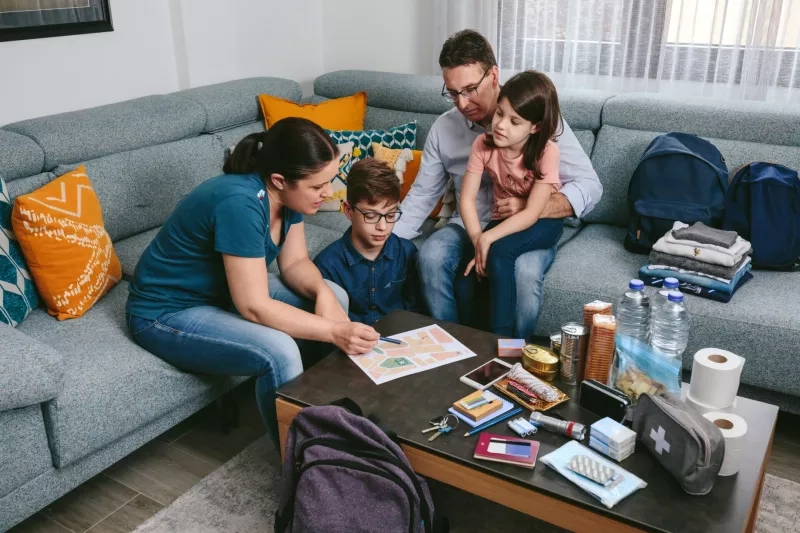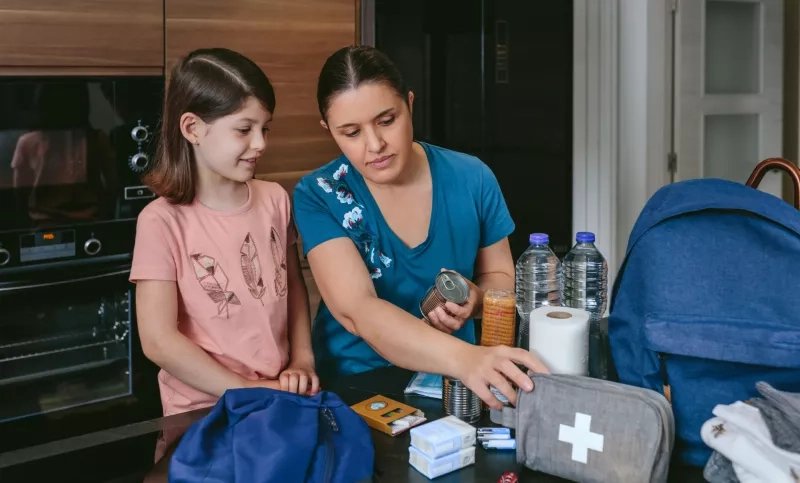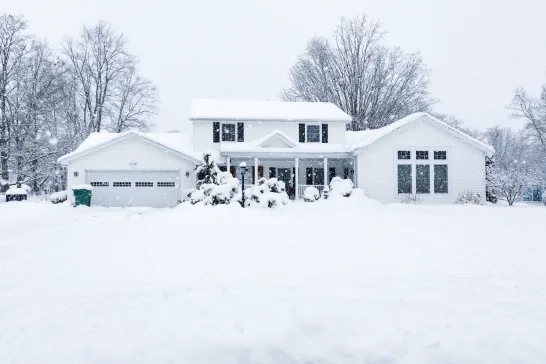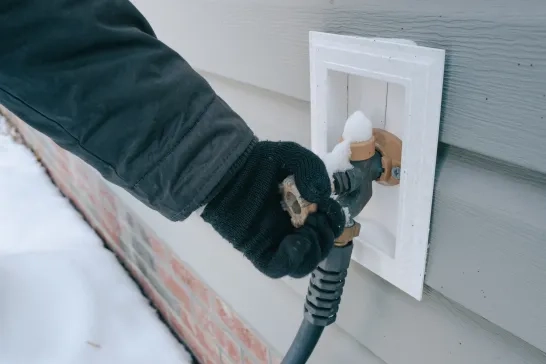
Be prepared: Building an emergency kit and plan
3 Minute Read
As summer heats up across the country, so does the need to be ready for wildfire emergencies.
With climate change impacting weather in unexpected ways, it’s increasingly important to be proactive instead of reactive for everything from extreme storms to widespread fires.
In other words, it’s important to be prepared with an emergency exit plan and emergency kit if you must evacuate your home.
Wildfires can happen anytime but are most active from May to September. They can substantially damage ecosystems, communities, and homes and pose a threat to health.
Household emergency plan
Be prepared for a fire or emergency with a household emergency plan. Having a plan ready that your family members know will help your family better navigate the stress of emergencies and disasters. The Canadian Red Cross has a template you can use to create an emergency plan for your family. Fill out the template online and then print it out. You can also keep a digital copy on your mobile devices.
Your plan should detail exit routes from your home in case of fire and include who rescues each pet. Remember to set a meeting point for your family if you get separated. Walk your family along the routes to the meeting point to ensure they know what to do and where to go.
Stay informed about local wildfires and follow local alerts and warnings.
Keep a copy of important information
You’ll want a list of important contacts, including your family doctors, veterinarians, insurance providers and utility companies.
Create a list of any medical conditions and information about any medication your family needs. Also, keep copies of essential documents, like birth certificates, insurance slips, and photos, to help firefighters and police identify your family.
Keep a physical copy in a binder or folder where you can grab it should you need to evacuate and a secure digital copy as a backup.
Emergency kit

doble-d | iStock
Emergencies or disasters can strike anytime, often without warning, leaving little time to prepare. An emergency kit can help when you must evacuate your home. Pack your kit in a backpack or suitcase that is easy to carry.
While you can purchase pre-made emergency kits, you can also make your own with supplies you may already have at home. The Canadian Government even has a handy checklist of things to include in an emergency kit. even has a handy checklist of things to include in an emergency kit.
Keep your kit in an accessible place that your family can quickly grab. Be sure to check and update your emergency kit annually. An emergency kit can also help if you are trapped in your home without power, water, or heat.
What to include
Ideally, you should have enough supplies to last 72 hours. An emergency kit should include enough drinkable water for your family, roughly one litre per person daily. Have non-perishable, canned or dehydrated foods and pet supplies packed as well. You should have a battery-operated or wind-up flashlight, plus extra batteries. Add candles, matches and a lighter to your kit.
Keep yourself and your family comfortable by packing some extra clothes, blankets, and toiletries. You can update your kit seasonally to have the right clothes for weather conditions. Make sure your emergency kit has a well-stocked first aid kit and any medication your family may need.
Stress and fear can be problems, so also pack books, playing cards, or colouring books to keep your family occupied and distracted. Include extra phone chargers, a power bank, and a battery-operated radio in your kit so you can stay informed about changing conditions.
Prepare your pets
Pets are a part of the family, and emergencies like house fires can be incredibly stressful .for them. Be sure to include pets in your emergency plan. Include your pet’s vet in the list of contacts in your emergency plan and have any medications or specifications about your pet recorded in the plan. Keep leashes or carriers accessible to quickly get your pet out with your family. When planning emergency exits from your house, keep your pets in mind to ensure you can safely get your pets out with your family.
In your emergency kit, include some extra pet food and medications your pet may need. Also, add enough water for your pet. Generally, four litres per dog per day and one litre per cat per day are sufficient. If there is space in the kit, keep an extra leash and harness handy, as well as a toy and blanket.
When planning for an evacuation, have a list of pet-friendly shelter options and animal boarders or shelters that accept dogs in the case of an evacuation.
Have a pet alert sticker or sign
In case of a fire, when your pets are alone in the house, have a sticker or sign near the front of your home that alerts emergency responders that there are usually pets in the home. Having your pet wear an ID tag with your contact information if you get separated is also a good idea.




